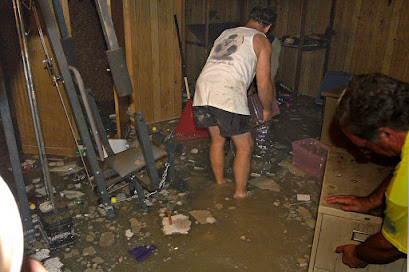Top 8 Disaster Preparedness Tips for homeowners After a Flood
The main causes of flood? The water is typically rainwater from a storm. It can also come from melting snow and ice, rivers overflowing their banks, or as a result of natural disasters such as hurricanes and earthquakes.
Floods may be classified by the height of the water which causes them - including flash floods, tidal floods, river floods (overland), urban flooding (storm sewer), and coastal flooding. Flash floods are typically seen due to sudden heavy rains that pour down in one location over a short period of time. A flash flood can be extremely dangerous for people and property in its path.
Mowing, cleaning out gutters, and planting trees and shrubs to prevent accumulating leaves all help to prevent flooding. In addition, make sure to clear off the leaves after a storm hits. If you have a rain gutter, clean it out so that water can drain from your roof instead of causing damage to your foundation and walls. Keep your gutters clear of leaves so that rainwater can drain.
If you live in an area prone to flooding, it's always a good idea to have a plan in place before a flood occurs. When planning for a flood, be sure to assess the potential risks as well as the possible benefits. Review important documents such as your mortgage information and insurance policies. Make copies of most documents so you won't lose them if they are damaged or destroyed by flood water.
Before flood season begins, you might want to consider purchasing an electronic monitoring system for your home. These systems can detect if flooding has occurred and then immediately alert you or your family, such as a siren or cellular phone call. Make sure to measure the height of the water to be sure it reaches the bottom of your basement or crawl space. Using electronics such as flood alarms and water detectors can help save you time and money during a flood.
If you've been affected by recent floods, you know that it's important to take time for the aftermath of this disaster. That means taking care of yourself and your family, cleaning up and repairing your home after flood damage, and preparing for future disasters. Here are our top eight tips on disaster preparedness:
1) Maintaining a flood kit with the emergency supplies you need to survive a week-long crisis: water, food, battery powered radio & flashlight.
A flood can last longer than you expect, so be sure your kit is big enough to last you and your loved ones at least 7 days. Keep this kit in a safe, accessible place, like a hall closet or the trunk of your car.
2) Talk to family members about who will take care of whom if a disaster strikes again. Consider assembling an emergency family meeting to discuss the issue from everyone's perspective and have each member help develop a plan of action.
3) Call your local utility, city or county officials to determine if you need to get a new gas, electric or water meter installed after a flood. If you don't get a new meter installed on your property, you may be charged by the utility for any water or gas used following a flood.
4) Look over your home carefully for structural damage and get repairs started on anything that needs doing before winter sets in.
5) Get your roof fixed, but don't wait to have it checked. Most insurance companies require that you get your roof checked after a flood and have it repaired before the next one hits. As soon as possible, have an inspection a flood damaged by a professional contractor (don't just go with the first person who comes to mind). A dry rot problem can be discovered in advance and repaired, and if not, then the damage will be greatly reduced or completely eliminated.
6) Check flood insurance rates. If you have insurance flood coverage, check the premium for your home and the amount covered. You may need to get a higher level of coverage to make up for losses you had in the past.
7) Ensure that all of your appliances are functioning correctly after a flood. Check for hot spots in electrical outlets or loose connections and repair any flood damages you find immediately.
8) Check the insurance policy you purchased after the flood to make sure it will cover damages. Get a copy of your policy and ensure that you have not been excluded from coverage. Never assume that flood damage is covered by insurance.
Conclusion: A flood can be a devastating and dangerous event. It would be impossible to list all the potential threats you could face, but take this list of tips as a starting point in determining how prepared you are. Remove any items that might cause harm, avoid eating or drinking anything that may be contaminated and get to high ground if possible. Don't panic; remain calm and focus on surviving, and you'll make it through in one piece.
Author Bio:- Laura Harnes
Laura is a marketing manager at EZ PLUMBING USA. With years of experience in the plumbing industry, she loves to create awareness about the causes, problems, and repair solutions of water damage and slab leak. She shares expert tips to lower utility bills and keep your AC, heater, and other appliances in optimum condition leading to longer lifespan.
Check all the recent articles and know everything about water damage Repair, slab leak repair, tools to remove clogging, and HVAC appliances installation, maintenance, and repair.




Comments
Post a Comment